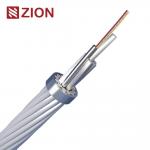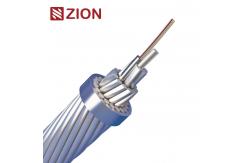Typical Designs of OPPC The Aluminium tube is surrounded by single or double layers of
aluminium clad steel wires(ACS) or mix ACS wires and aluminium
alloy wires. Characteristic and Application - Replacing one or several wires of the traditional conductor with
stainless steel tube and strand the tube with AS/steel wires and
AL/AA wires.
- Replacing one of the three phase conductors with OPPC, thus to form
a transmission line which consists of one OPPC and two phase
conductors.
- Mechanical and electrical performance can match the adjacent two
phase conductors.
- OPPC can meet durative high temperature resistant which
veri_x001f_ed by Temperature Cycling test and Short Current test.
- OPPC is applied to middle & high voltage power lines without
ground wires such as 10kV, 35kV, 66kV and so on.
- Telecommunications for middle & high voltage power lines in
urban and rural areas; Providing optical cables for building
distribution automation station.
Packaging and Drum DetailsCable Sheath Marking:- Marking Color: White
- Contents:
- Manufacturer: ZION
- Year of Manufacture
- Cable Type
- Cable Number
- Length Marking Interval: 1 ± 0.2% m
- Customizable Marking: The outer sheath legend can be altered per user requests.
Reel Length:- Standard Length: 2 to 3 km per reel
- Custom Lengths: Available upon request
Cable Drum:- Drum Material: Fumigated wooden or plywood drums
- Sealing: Both ends sealed with plastic caps to prevent moisture during
shipping, handling, and storage.
- Testing Access: The inner end of the cable is available for testing purposes.
Cable Packing:- Protective sealing ensures no moisture infiltration during transit
or storage, guaranteeing optimal product integrity upon delivery.
It looks like you're sharing data related to different types of
OPPC cables under various temperature conditions. Based on the
format, I see that each entry has multiple columns, which could
represent: - Cable Type (OPPC-XX/YY): Various OPPC (Optical Phase Conductor) models.
- Current Rating (measured in Amps, likely the maximum current each cable can carry
under different temperature ranges).
- Temperature Ranges: Different operating temperatures: 40-70°C, 40-80°C, and 40-90°C.
- Other Values: The remaining values are likely related to different
specifications, such as power loss, tensile strength, or specific
electrical characteristics at those temperatures.
|







